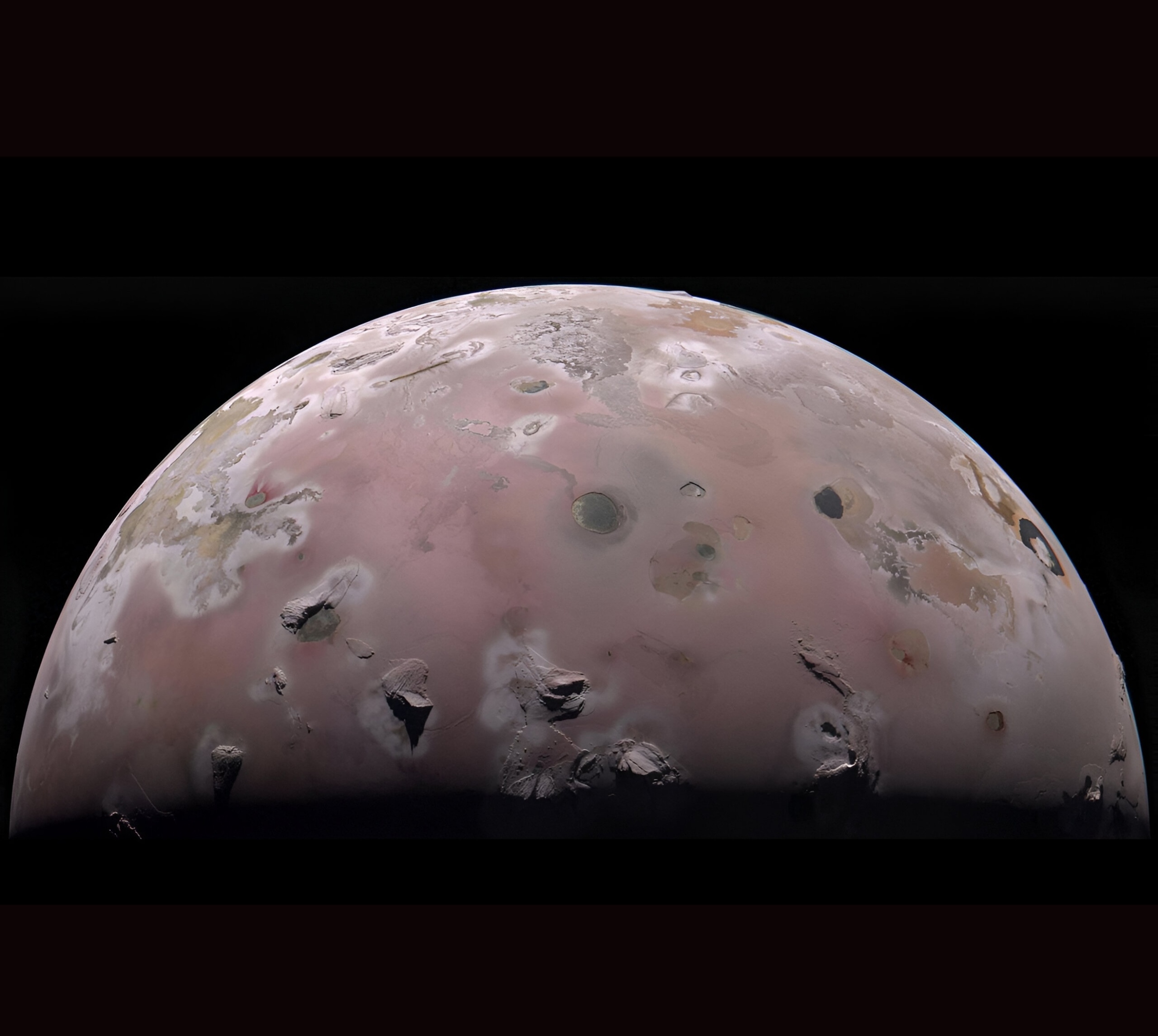The camera on NASA’s Juno spacecraft was in trouble. Known as JunoCam, it had survived over 50 orbits around Jupiter, capturing stunning images of the planet and its moons. But by late 2023, things took a turn for the space camera.
Radiation had started to wear it down. The photos coming back were almost unusable – full of static, streaks, and distortion.
The camera had been exposed to Jupiter’s brutal radiation environment for years. With one of its most important missions approaching – a close flyby of Jupiter’s volcanic moon Io – the team needed a fix. And they had to do it from over 400 million miles away.
Camera repair in deep space
A team of experts, including scientists from the Southwest Research Institute in San Antonio, took a shot in the dark. The experts believed the problem stemmed from radiation damage to a voltage regulator inside JunoCam. Their only remaining option was to try something risky – heat up the camera.
The process, called annealing, involves raising the temperature of a material to change it at a microscopic level. It’s a method used in electronics but rarely attempted in deep space.
Jacob Schaffner is the Managing Engineer at Malin Space Science Systems, which designed and developed JunoCam and is part of the team that operates it.
“We knew annealing can sometimes alter a material like silicon at a microscopic level but didn’t know if this would fix the damage,” said Schaffner.
“We commanded JunoCam’s one heater to raise the camera’s temperature to 77 degrees Fahrenheit – much warmer than typical for JunoCam – and waited with bated breath to see the results.”
Cranking up the heat on JunoCam
The first results were promising. The camera began producing clearer images again – but that didn’t last. Quality started to slip again.
“After orbit 55, our images were full of streaks and noise,” said JunoCam instrument lead Michael Ravine of Malin Space Science Systems. “We tried different schemes for processing the images to improve the quality, but nothing worked.”
“With the close encounter of Io bearing down on us in a few weeks, it was Hail Mary time: The only thing left we hadn’t tried was to crank JunoCam’s heater all the way up and see if more extreme annealing would save us.”
They gave it everything. The heater was turned up further, hoping that higher temperatures might realign the silicon and bring the camera back to life.
At first, it didn’t look like it worked. Test images were still noisy. But as Juno closed in on Io, the pictures began to improve – rapidly. By December 30, 2023, during its closest flyby yet – just 930 miles from Io’s surface – the images were crisp and detailed.
The camera captured towering mountains dusted with sulfur dioxide frost and active lava flows from Io’s uncharted volcanoes. It was official – JunoCam was back.
Beyond space camera repair
The team didn’t stop there. They have now applied versions of the annealing fix to other systems on the spacecraft – both science instruments and engineering subsystems.
Since its launch, Juno has made 74 orbits of Jupiter. During its most recent pass, image noise crept in again. But now the team has a tool – and some confidence – that they can respond.
“Juno is teaching us how to create and maintain spacecraft tolerant to radiation, providing insights that will benefit satellites in orbit around Earth,” said Scott Bolton, Juno’s principal investigator.
“I expect the lessons learned from Juno will be applicable to both defense and commercial satellites as well as other NASA missions.”
Lessons from a space camera
The lesson from this mission isn’t just about salvaging a camera. It’s about improvising when there’s no manual. It’s about learning how to keep hardware working long past its expected limits — under some of the harshest conditions in the solar system.
Space is punishing. JunoCam wasn’t built to last forever. But thanks to some smart thinking and a little heat, it got a second chance. And it’s still taking pictures.
Image Credit: NASA/JPL-Caltech/SwRI/MSSS. Image processing by Gerald Eichstädt
—–
Like what you read? Subscribe to our newsletter for engaging articles, exclusive content, and the latest updates.
Check us out on EarthSnap, a free app brought to you by Eric Ralls and Earth.com.
—–
